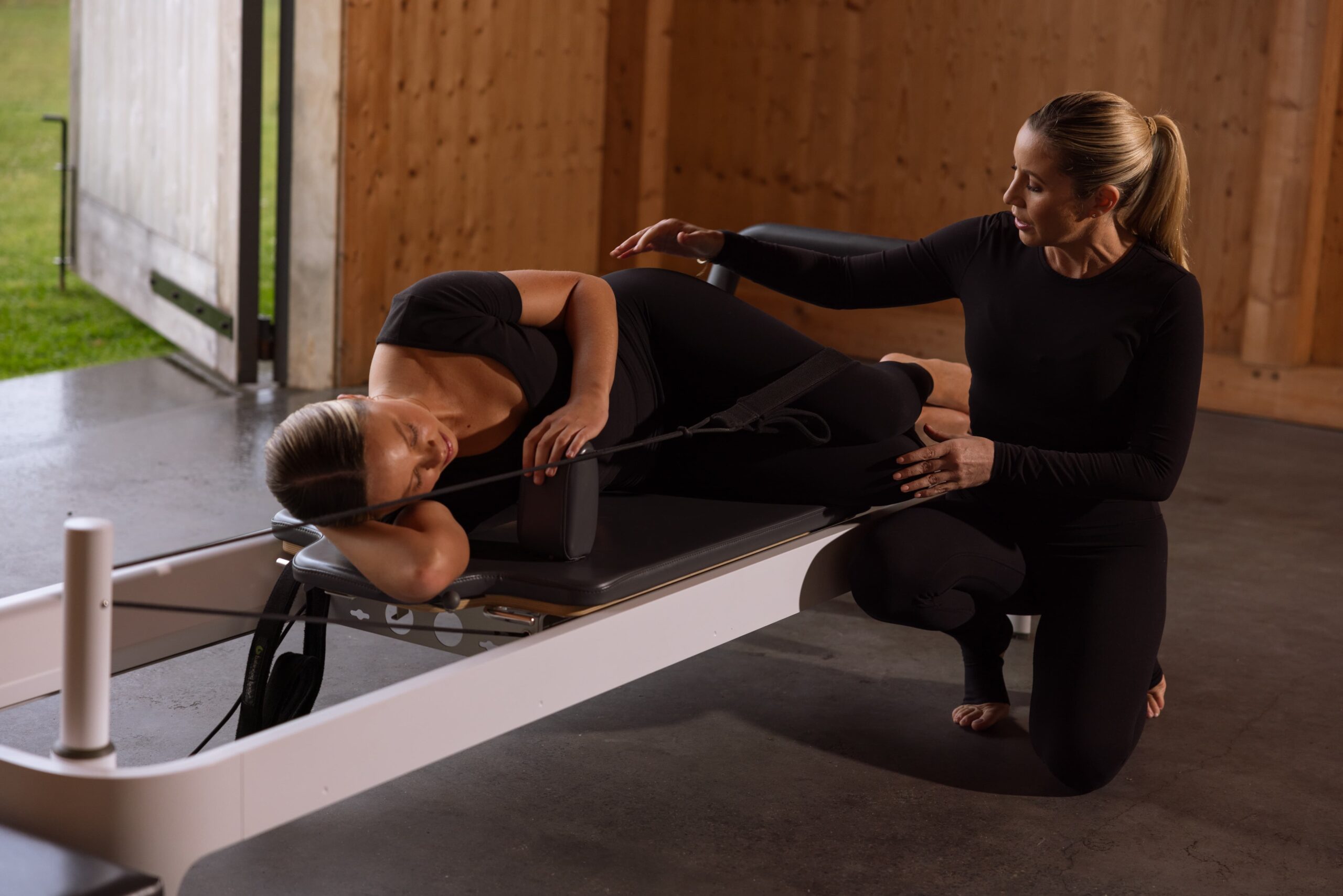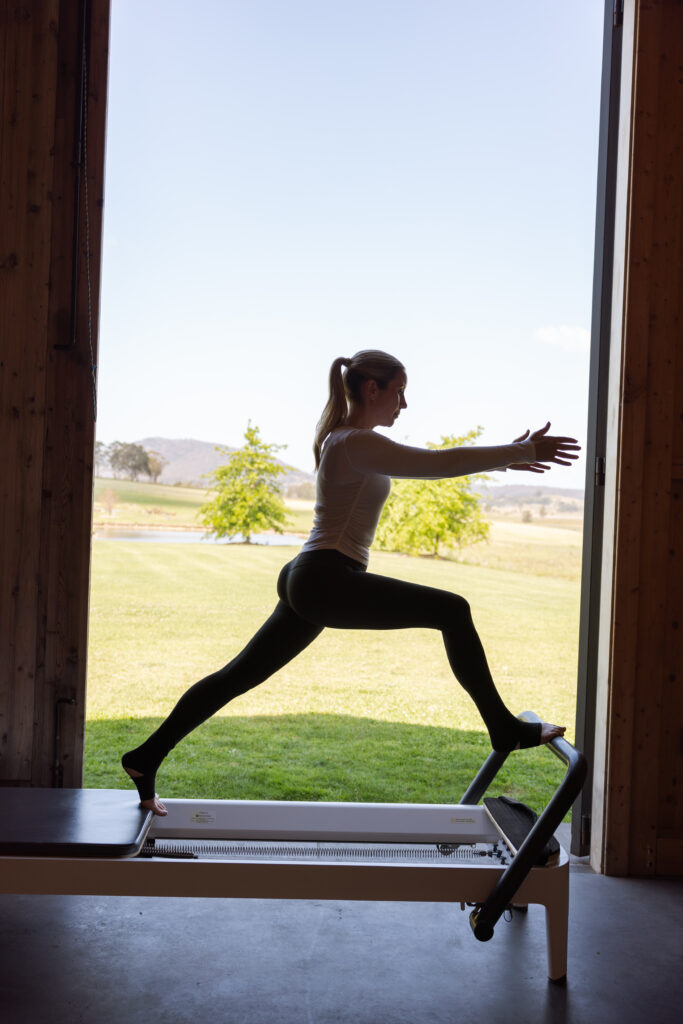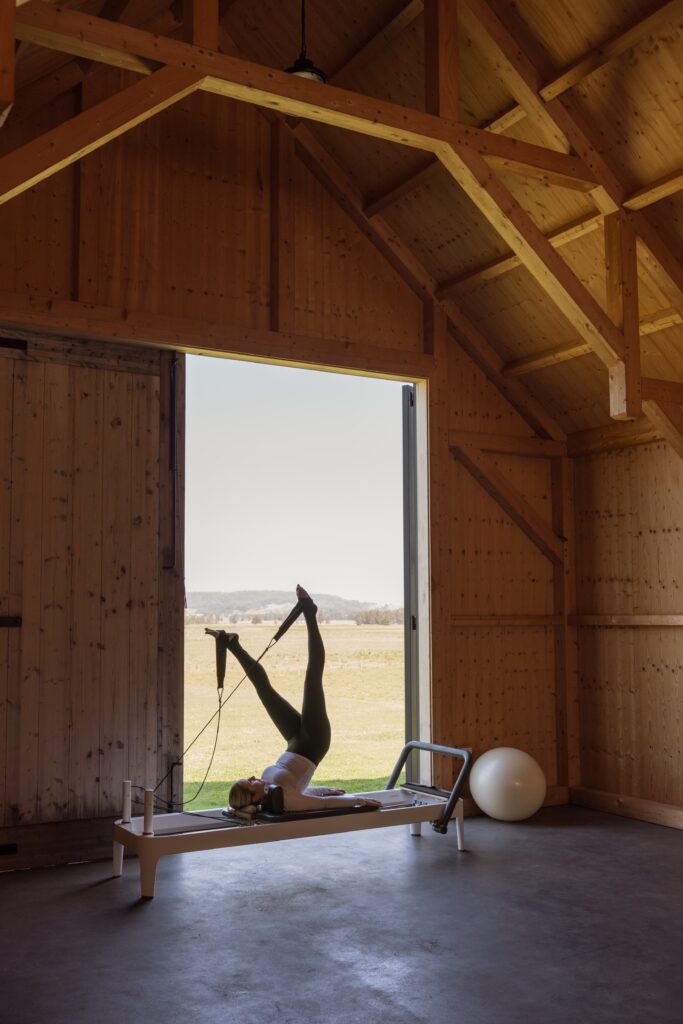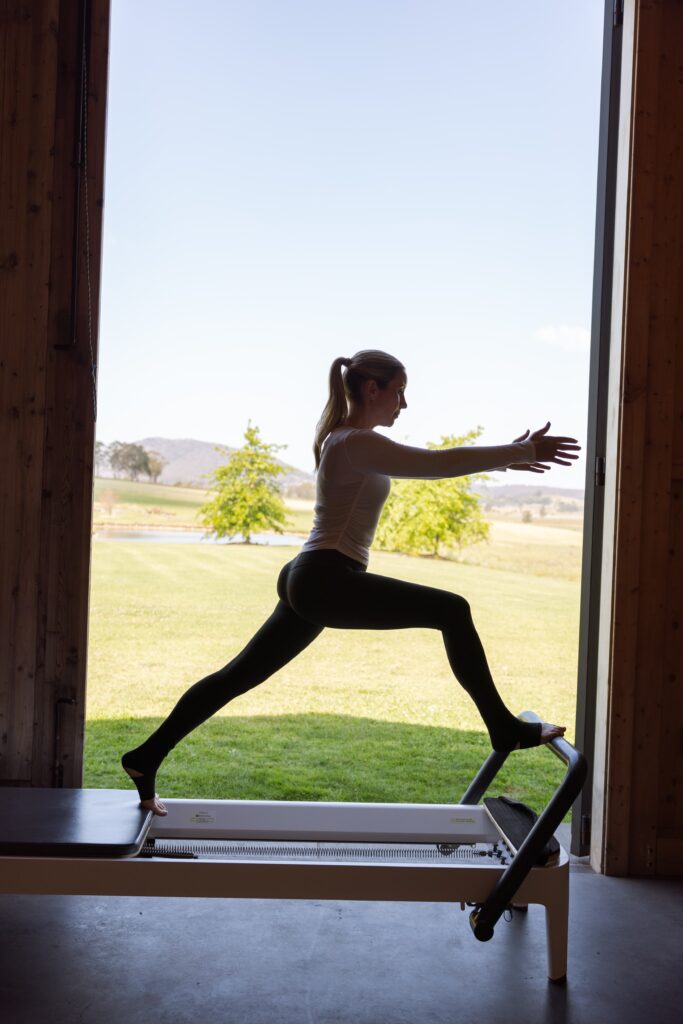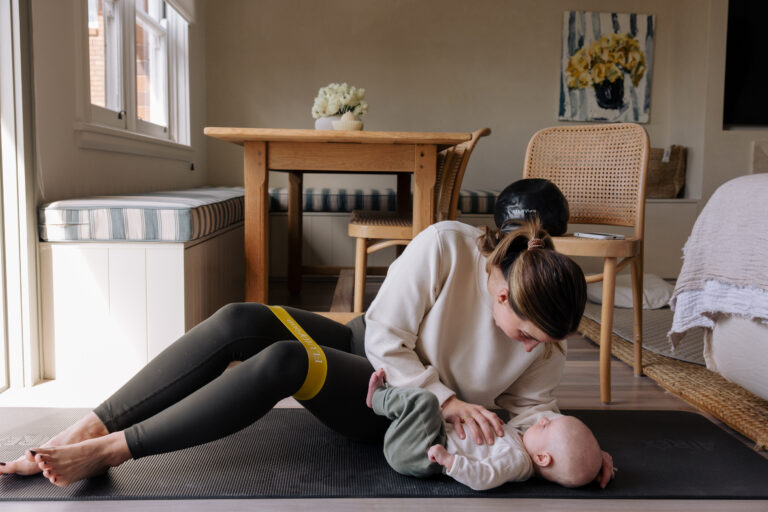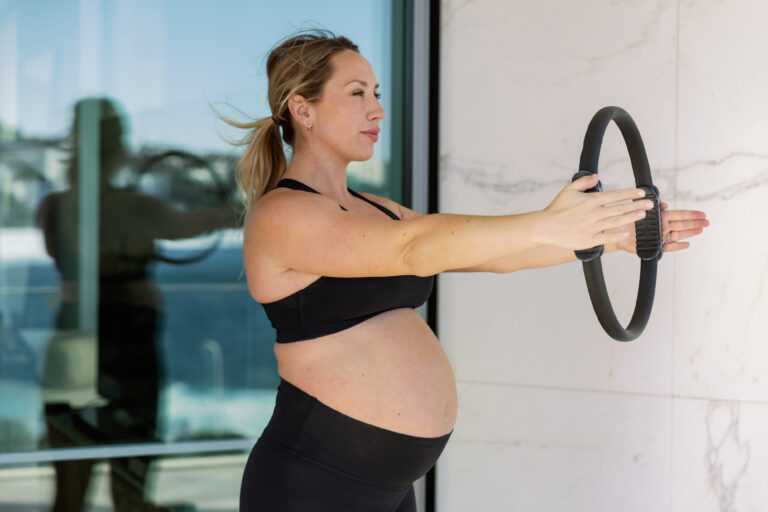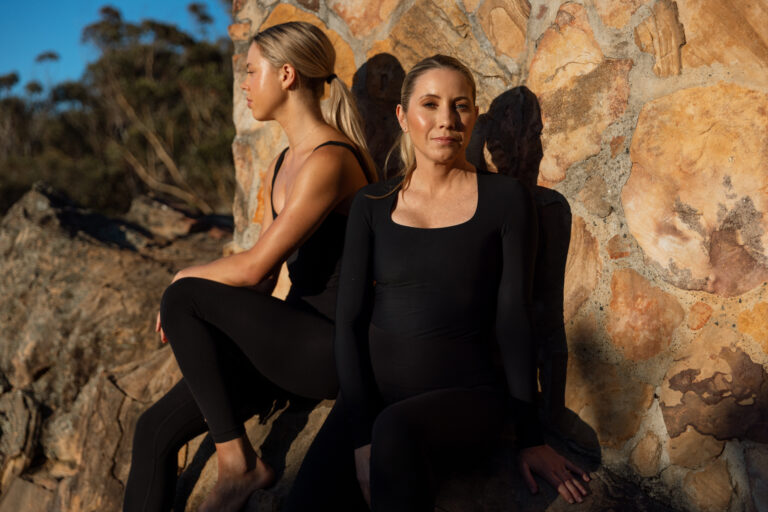How does reformer Pilates differ from traditional mat Pilates?
Reformer Pilates is based on the foundations of the matwork practise, introducing a Reformer machine to add weight, resistance and manoeuvre the body into positions which would otherwise not be achievable.
What are the basic components and features of a reformer machine?
The main components of the Reformer include the carriage, foot bar, springs, straps and jumpboard. These are the key components you can modify to progress or regress the movements and will both challenge and support each movement. The carriage is the moving bed at the centre of the reformer. The carriage resistance relies on the springs and the straps are used to move the carriage. The springs connect the carriage to the frame of the machine. Each Reformer is different, however each combination of strings applies a varying level of resistance to increase or decrease the intensity of each movement. The straps support your legs or arms, gliding the carriage along the frame to build pace and fluidity, against the resistance of the springs. The footbar can be adjusted to support your hands or feet, again used to move your body with the carriage, up and down the frame. The jumpboard adds a platform for your feet or hands to “jump” or “spring off”, which adds pace and speed to your movements. The addition of the jumpboard brings a level of cardio to your workouts.
Is Pilates suitable for beginners?
What makes Reformer Pilates unique, is its ability to modify or transfigure to regress or progress certain movements, depending on the client. Taking the Matwork fundamentals and applying varying levels of spring resistance or weight, Reformer Pilates will build strength, improve posture or rehabilitate injuries and imbalances. Similar to strength training or high intensity workouts, Reformer Pilates combines weight with resistance and high repetition movements to fatigue and strengthen the muscles. However unlike running or HIIT, Reformer Pilates works the body in a supported or horizontal position, which minimises impact to the joints and muscles. This is particularly beneficial to rehabilitation clients or clients with physical limitations, as they are able to regain their strength and mobility in a safe and supported position.
For someone new to Reformer Pilates, what advice would you offer to enhance their experience and maximise the benefits?
- Forget everything you think you know! Find a teacher you trust, listen to their cues and allow your mind to connect with your body to really feel the movements.
- Tune into your mind-body connection. When the mind and body are at ease, you are able to properly connect and activate your deepest muscles for the best results.
- Find a teacher or online program you trust, focus on perfecting your form and technique before advancing and challenging your workouts.
Are there any common misconceptions about reformer Pilates that you frequently encounter? How can these be clarified to provide a more accurate understanding of the practice?
There are many misconceptions that are associated with Pilates, often be it too easy or too difficult. While Mat Pilates has honed a “too easy” label, Reformer is often classed as “too difficult” due to its unique shape and function. On the contrary, Mat Pilates has the ability to challenge the most elite athletes, and Reformer Pilates has many benefits for beginners and injured clients. The straps, springs and moving carriage might be intimidating to someone who has never tried it. It requires focus, mind-body connection and patience.
